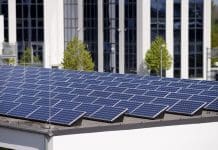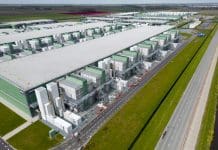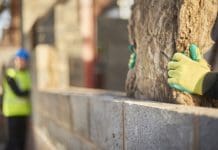Embodied carbon is the carbon dioxide (CO2) and other greenhouse gas (GHG) emissions associated with the extraction, manufacture, transportation, assembly, replacement and deconstruction of building materials and products. Embodied carbon can be calculated for different stages of a product lifecycle such as ‘cradle to gate’, ‘cradle to site’, ‘cradle to end of construction’ or ‘cradle to grave’ and is usually expressed in kilograms of CO2e per kilogram of material or product. Ideally, embodied carbon calculations should be based on actual data provided by the manufacturer of the material or product. If this is not available the calculation is made by multiplying the quantity of a particular material by a ‘conversion factor’ obtained from one of the widely published generic databases of construction materials although, being based only upon average values, this produces a less accurate result for specific materials. It is more beneficial to use the most accurate data possible as this provides more scope for identifying the main impact areas (carbon intensive materials or processes) and therefore where most savings can be made.
Embodied carbon is related to carbon footprinting in that embodied carbon is the carbon footprint of a material or product. The carbon footprint of a building refers to its operational carbon requirements, for example, in the heating, cooling, lighting and operation of its lifts and escalators, whereas embodied carbon is used in the context of materials, products and activities related to the construction, maintenance and deconstruction of a building.
Benefits of reducing embodied carbon
Until now embodied carbon has taken a bit of a back seat to the energy and carbon associated with operating buildings or using infrastructure, but as more is learnt about these impacts, the financial and environmental case for action is becoming clearer. Carbon is really just another way of looking at the use of materials and resources and that means it can be linked back, in most cases, to cost.
Measures to reduce embodied carbon are often closely tied with measures to reduce cost. For example, reducing the amount of construction materials needed, sourcing them more locally and insisting on high sustainability credentials from manufacturers are all ways to reduce both carbon and cost. Design is also important; a robust and flexible end product reduces maintenance costs as well as the carbon associated with disposing of and replacing worn out parts.
Industry activity on Embodied carbon
At present, embodied carbon remains a best practice measure driven by clients with a strong commitment to environment and sustainability and/or by sustainable building rating schemes such as BREEAM. In April 2014 the first ever Embodied Carbon Week was launched by the UK Green Building Council. This event put a spotlight on current best practice and sent clear signals that this is an issue that must be addressed by the industry. More information about the campaign and results can be found here www.ukgbc.org/content/embodied-carbonweek.
WRAP has also developed a range of useful guidance and tools:
– Overview of embodied carbon in construction;
– Business case for embodied carbon – written by WRAP, clients and contractors providing an overview of the benefits of considering embodied carbon;
– Embodied carbon database – developed by WRAP to share and access information from embodied carbon assessments of buildings.
The public and private sectors, in general, are becoming more concerned with the embodied carbon associated with the construction, use and end of life of buildings. While this has not yet become a legislative issue, it is likely that policy measures will be developed aimed at reducing the embodied carbon in buildings and the industry needs to be ready to meet the demands of both regulation and its clients.
Sarah Kenny
Sales & Marketing Manager
Construction Industry Publications Ltd
Tel: 0870 078 4400
skenny@cip-books.com













